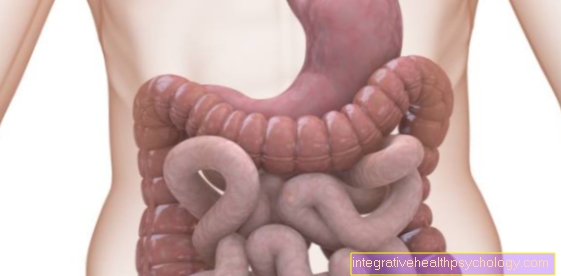Calcified placenta
What is a calcified placenta?
The placenta plays a central role in pregnancy because it ensures the exchange of nutrients between mother and child. Their intactness is therefore of crucial importance for an uncomplicated course of pregnancy. The expression “calcified placenta” is becoming more and more common. But what exactly is a calcified placenta and what does this mean for pregnancy?
Calcifications in the placenta are natural and occur during pregnancy. They are found especially in the last weeks of pregnancy and arise as part of the natural aging process of the placenta. The calcifications can be determined with the help of ultrasound examinations. Depending on the severity, a distinction is made between three degrees of calcification.

causes
Many women wonder how calcification occurs in the placenta and what the causes of these changes are. In general, calcifications on the placenta are simply part of the natural aging process of placental tissue. The placenta only develops as an organ during pregnancy, so its lifespan is limited.
In terms of its nature, it is also only geared towards this short lifespan, so that towards the end of pregnancy it begins to degrade in its function. This is expressed by calcifications. A calcified placenta towards the end of pregnancy is therefore quite normal.
On the other hand, very severe or premature calcifications can develop in the context of other underlying diseases such as infectious diseases, preeclampsia, diabetes mellitus or autoimmune diseases such as lupus erythematosus. Smoking also seems to play a role in premature placenta calcification.
Smoke
Smoking is one of the biggest risk factors for a dangerous pregnancy. Smoking not only promotes thrombosis and can be life-threatening for mother and child, but also disrupts the blood flow to the placenta and thus to the child, leads to fetal stress and has a massive impact on the healthy development of the unborn child.
Smoking also has an adverse effect on the development of the placenta. Smoking can lead to premature calcification of the placenta. In this context, circulatory disorders of the placenta also occur, which can result in so-called placental insufficiency.
Placental insufficiency is an underactive placenta in which a proper exchange of nutrients between mother and child cannot take place. However, this is essential for the child's healthy development.
diagnosis
The diagnosis of a calcified placenta is made by the gynecologist. The gynecologist can determine calcifications on the placenta in the ultrasound examination. There calcifications appear as whitish changes on the placental tissue.
Based on the extent of the calcifications and the age of pregnancy, the gynecologist can determine whether the calcifications are natural or very advanced. Looking at the condition and stage of development of the fetus, the gynecologist can determine whether the calcifications are harmless or whether they could be an expression of another previous illness.
Grade
Based on the ultrasound examination, the gynecologist can classify calcifications in the placenta into three grades, which depend on the extent of the calcifications. Slightly pronounced calcifications are referred to as grade I grannum. They are absolutely natural and can be found in almost every woman towards the end of pregnancy.
One speaks of a grade II grannum as soon as somewhat stronger, also more prominent, calcifications appear. At the end of pregnancy, however, these are also to be considered natural and have no disease value.
A grade III grannum is present if there is severe calcification of the placenta. These calcifications usually lead to the pregnancy being closely monitored by the attending gynecologist. A grade III grannum should not be regarded as dangerous per se, but can also be quite normal at the end of pregnancy. A grade III grannum in early pregnancy, on the other hand, may indicate another pre-existing condition.
How dangerous is that for my baby?
Calcifications in the placenta often lead to uncertainty and concern about the baby's wellbeing in expectant mothers. As a rule, however, placenta calcifications are not a cause for concern, but rather an expression of a natural process of maturation and aging of the placenta. The calcifications lead to an undersupply of the placental tissue at certain points, but this undersupply does not affect the child.
There is no shortage of supply for the baby and a healthy birth is not at risk. Even if it has often been assumed that a calcified placenta could lead to a miscarriage, impair the birth or cause fetal stress, these fears have not been proven in studies.
It has only been shown that a very heavily calcified placenta, i.e. grade III calcification, can be associated with premature labor. However, this does not have to pose a risk to the child either. If the placenta is heavily calcified, which exceeds the usual level, the attending gynecologist will closely monitor the pregnancy in order to be able to identify an under-supply of the baby immediately.
You may also be interested in the following article: Induce labor
Premature calcification of the placenta can be an indication of an existing pre-existing condition in the mother that requires treatment. These include, for example, infectious diseases, diabetes or preeclampsia. Such pre-existing conditions can put the baby at risk. However, placenta calcifications are usually natural and safe.
Concomitant symptoms
The calcification of the placenta as such does not cause symptoms. Placental calcifications are not noticed by the expectant mother, but are only noticeable during the ultrasound examination by the gynecologist. In the vast majority of cases, placental calcifications are natural and have no disease value.
However, they rarely occur in early pregnancy as part of a previous illness. These include in particular diabetes mellitus, preeclampsia, maternal lupus erythematosus or intrauterine infectious diseases. These diseases lead to various symptoms, which per se have nothing to do with placental calcifications and cannot be associated with them.
Pain
A calcified placenta is noticeable on ultrasound, which means that it is diagnosed on ultrasound. The calcifications are noticeable in routine pregnancy examinations and are usually not of any disease value. Symptoms or even pain are not an expression of a calcified placenta.
If the pregnant woman has abdominal pain, other clinical pictures and causes must be considered, but not calcification of the placenta. The calcifications are not noticed by pregnant women.
However, abdominal pain during pregnancy can have many different causes, which is why a doctor should be examined. In most cases, however, they are also harmless in nature.
Placental insufficiency
Placental insufficiency is a disturbed exchange of substances between the mother and the child via the placenta. This condition can be due to various causes and clinical pictures. A further distinction is made between acute and chronic insufficiency, with chronic placental insufficiency in particular being accompanied by increased calcification.
However, caution is advised here: it is at best a correlation, not a causality. This means that increased calcifications and a functional disorder of the placenta can occur at the same time, but the calcifications are not the cause of this functional disorder.
Diseases related to the placenta can be of various types. Please also read our article on this: Diseases of the placenta
treatment
Calcifications in the placenta do not require treatment as such. However, if they occur as part of a previous illness, for example diabetes mellitus, preeclampsia or an infectious disease, the respective underlying disease will be treated.
In the case of very severe calcifications and a reduced function of the placenta, i.e. chronic placental insufficiency, the gynecologist will advise you to take physical rest and bed rest in order to prevent premature birth. Pregnancy checks will also be carried out more closely in order to be able to cushion complications at an early stage.
If you have pre-existing high blood pressure (see also: Hypertension of pregnancy) or diabetes mellitus, the optimal setting of blood pressure and blood sugar values is very important in order to have a positive influence on the course of pregnancy. If placental insufficiency persists after the 37th week, induction of labor or a caesarean section can be performed to prevent complications. However, this must be decided individually.
Can you prevent a calcified placenta?
Calcification of the placenta can only be prevented to a limited extent. Calcifications are quite natural with increasing pregnancy and are part of the maturation and aging process of the placenta. Such an aging process cannot be prevented. Smoking is discussed as one of the factors that can lead to premature calcification of the placenta.
Of course, you shouldn't smoke during pregnancy, as this can cause considerable damage to the unborn child. The placenta plays a central role in this, as smoking leads to reduced blood flow and thus to a malfunction of the placenta.
What can be the long-term consequences of a calcified placenta?
A calcified placenta is initially not a cause for concern. The calcifications are a natural maturation process that usually has no consequences for mother and child. Only premature and very excessive calcification of the placenta can cause a reduced blood flow. This reduced blood flow to the placenta can result in an insufficient supply of nutrients to the child.
Such an undersupply manifests itself in a growth and development delay of the fetus. However, if the placenta is very calcified, the gynecologist will monitor the pregnancy even more closely than before, so that serious consequences are usually very rare.


























.jpg)


